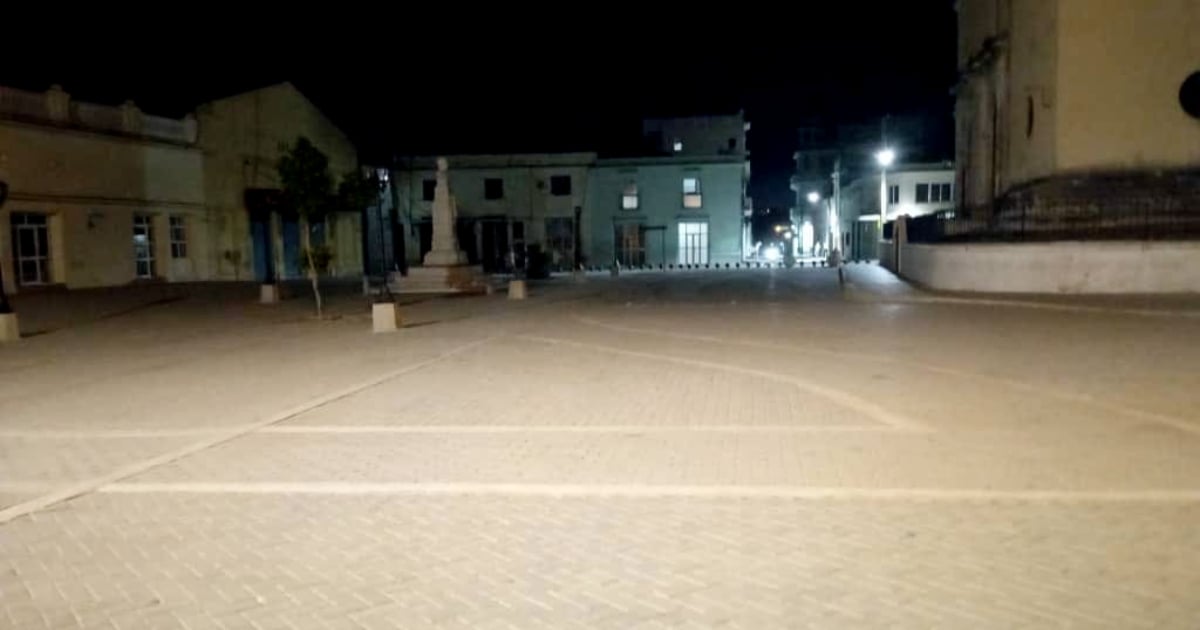It's not a new tactic, but it certainly highlights the level of tension among Cuba's ruling elite: government profiles on social media once again shared images this Thursday depicting the supposed tranquility on the streets of Cuba.
"It's pleasant to walk through the streets of Guanabacoa tonight and enjoy our Plaza Adolfo del Castillo and surrounding streets in this #LaHabanaDeTodos. #UnidosXCuba #CubaEnPaz," announced the Municipal Administration Council of Guanabacoa on its social media accounts.
The post featured photographs taken in public spaces of the locality, showing scarcely populated streets conveniently illuminated amidst the frequent and prolonged power outages that plague Cuba.
Government's Response to Protests
Following the protests on March 17 (17M), where a crowd in Santiago de Cuba took to the streets demanding "electricity and food," local authorities employed the same strategy.
Profiles of state companies, officials, official journalists, and even professionals from other sectors formed what has been called a "swarm of bees." These trolls, activated by State Security agents, aimed to convey calm with photos of empty streets in Santiago de Cuba.
From this province, Cuban activists reported a significant police presence this Wednesday, fearing public protests. An imposing number of trucks, patrol cars, and a large contingent of National Revolutionary Police (PNR) and special troops from the Ministry of the Interior (MININT), known as "black berets," were seen.
In early May 2023, the Cuban regime tried to project "tranquility" after protests erupted in Caimanera, Guantánamo, which were violently suppressed by MININT forces.
State media, official journalists, and regime supporters shared images of empty streets in Caimanera online, attempting to downplay the protests.
In mid-July 2022, as Cubans from various provinces took to the streets to protest frequent blackouts and food shortages, the regime and its supporters began posting on social media to portray a sense of calm.
Pro-regime citizens were quick to post photographs of empty cities after a mass of people took to the streets of Los Palacios in Pinar del Río, banging pots and chanting slogans against the police and leader Miguel Díaz-Canel.
The Ministry of Communications also shared several tweets calling for "resistance to any aggression," following reports of Internet outages in various provinces to prevent the spread of protests.
This was confirmed by the data journalism site Inventario, which recorded a decrease in internet connectivity in at least nine cities, a strategy the regime has employed since the historic protests of July 11 (11J) in Cuba.
Understanding the Current Situation in Cuba
To provide more context on the ongoing issues in Cuba, here are some frequently asked questions and their answers.
What sparked the recent protests in Cuba?
The recent protests were primarily sparked by frequent power outages and food shortages, which have exacerbated the already difficult living conditions for many Cubans.
How has the Cuban government responded to the protests?
The Cuban government has responded by deploying a significant police presence, sharing images of empty streets to project an image of calm, and cutting internet access to prevent the spread of protest information.
What role do social media and internet outages play in Cuba's situation?
Social media is a critical tool for both the Cuban government and citizens. The government uses it to project control and calm, while internet outages are employed to stifle dissent and prevent the organization of protests.
